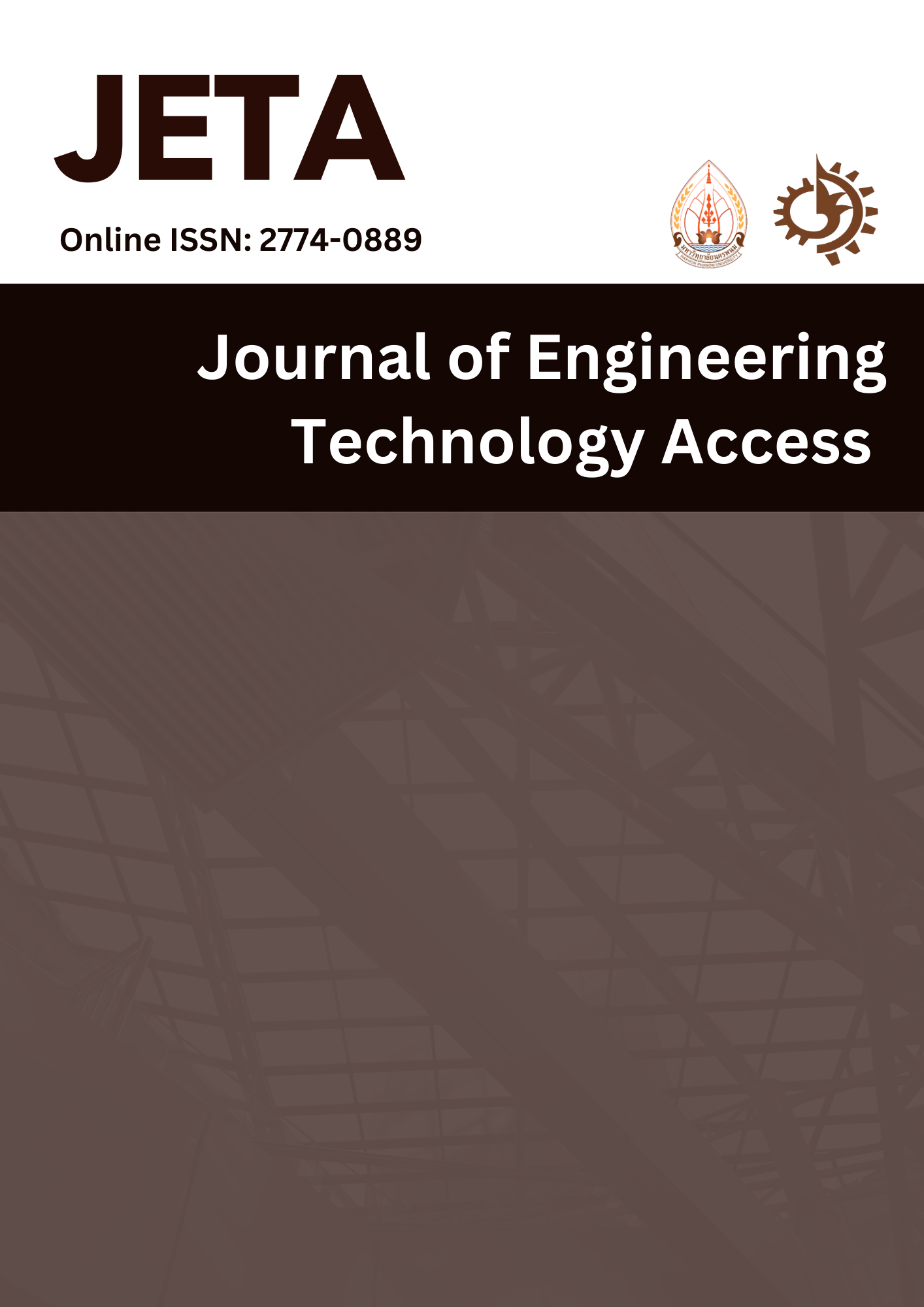การออกแบบและสร้างสถานีวัด PM2.5 สำหรับโรงเรียนต้นแบบด้วยระบบ IoT แสดงผลบน Google Data Studio
Main Article Content
บทคัดย่อ
บทความนี้นำเสนอการออกแบบและสร้างสถานีวัด PM2.5 สำหรับโรงเรียนต้นแบบด้วยระบบ IoT พร้อมแสดงบน Google Data Studio โดยทำการออกแบบและสร้างด้วย IoT สำหรับวัดและแจ้งเตือนปริมาณฝุ่น PM2.5 บอร์ด ESP8266 ตัวเซนเซอร์วัดฝุ่น PM2.5 อุณหภูมิ และก๊าซ CO ผลการการศึกษาผลวัดพบว่าการวัดฝุ่น PM2.5 ร้อยละความแตกต่างของผลวัดค่าฝุ่น PM2.5 เท่ากับ 39.06 26.56 23.43 14.06 13.95 และ 12.72 ไมโครกรัมต่อลูกบาศก์เมตร และผลการวัดที่บันทึก Google sheet สำหรับการเก็บข้อมูลผลวัด PM2.5 เท่ากับ 4-11 ไมโครกรัมต่อลูกบาศก์เมตร ผลการวัดอุณหภูมิและความชื้นสัมพัทธ์เท่ากับ 33 40 40 36 35 และ 34 องศา และความชื้นสัมพันธ์แนวโน้มเดียวกัน และผลการวัด CO เท่ากับ 120 132 123 142 162 140 ppm และค่าเฉลี่ยเท่ากับ 136.5 ppm ผลการทดสอบและเปรียบเทียบแนวโน้มที่ทิศทางเดียวกัน ผลการวิจัยเป็นการต่อยอดให้โรงเรียนต้นแบบกำหนดแผน นโนบายในการให้ลดปริมาณฝุ่น PM2.5 ในช่วงฤดูหนาวและแล้งต่อไป
Article Details

อนุญาตภายใต้เงื่อนไข Creative Commons Attribution-NonCommercial-NoDerivatives 4.0 International License.
เอกสารอ้างอิง
B. Zou, Q. Pu, M. Bilal, Q. Weng, L. Zhai and J. E. Nichol, "High-Resolution Satellite Mapping of Fine
Particulates Based on Geographically Weighted Regression," in IEEE Geoscience and Remote Sensing Letters, vol. 13, no. 4, pp. 495-499, April 2016, doi: 10.1109/LGRS.2016.2520480.
Y. Gao et al., "Mosaic: A low-cost mobile sensing system for urban air quality monitoring," IEEE
INFOCOM 2016 - The 35th Annual IEEE International Conference on Computer Communications, 2016, pp. 1-9, doi: 10.1109/INFOCOM.2016.7524478.
S. Kumar and A. Jasuja, "Air quality monitoring system based on IoT using Raspberry Pi," 2017
International Conference on Computing, Communication and Automation (ICCCA), 2017, pp. 1341-1346, doi: 10.1109/CCAA.2017.8230005.
Y. Hu, G. Dai, J. Fan, Y. Wu and H. Zhang, "BlueAer: A fine-grained urban PM2.5 3D monitoring
system using mobile sensing," IEEE INFOCOM 2016 - The 35th Annual IEEE International Conference on Computer Communications, 2016, pp. 1-9, doi: 10.1109/INFOCOM.2016.7524479.
P. Das, S. Ghosh, S. Chatterjee and S. De, "Energy Harvesting-enabled 5G Advanced Air Pollution
Monitoring Device," 2020 IEEE 3rd 5G World Forum (5GWF), 2020, pp. 218-223, doi: 10.1109/5GWF49715.2020.9221330.
A. Kumar, M. Kumari and H. Gupta, "Design and Analysis of IoT based Air Quality Monitoring
System," 2020 International Conference on Power Electronics & IoT Applications in Renewable Energy and its Control (PARC), 2020, pp. 242-245, doi: 10.1109/PARC49193.2020.236600.
S. K. Jha et al., "Domain Adaptation-Based Deep Calibration of Low-Cost PM₂.₅ Sensors," in IEEE
Sensors Journal, vol. 21, no. 22, pp. 25941-25949, 15 Nov.15, 2021, doi: 10.1109/JSEN.2021.3118454.
J. Yun and J. Woo, "IoT-Enabled Particulate Matter Monitoring and Forecasting Method Based on
Cluster Analysis," in IEEE Internet of Things Journal, vol. 8, no. 9, pp. 7380-7393, 1 May1, 2021, doi: 10.1109/JIOT.2020.3038862.
M. G. A. Mapili, K. A. D. Rodriguez and J. T. Sese, "Smart Air Filtration System Using IoT and Kalman
Filter Algorithm for Indoor Air Quality and Plant Monitoring," 2021 IEEE 11th International Conference on System Engineering and Technology (ICSET), 2021, pp. 309-314, doi: 10.1109/ICSET53708.2021.9612560.






